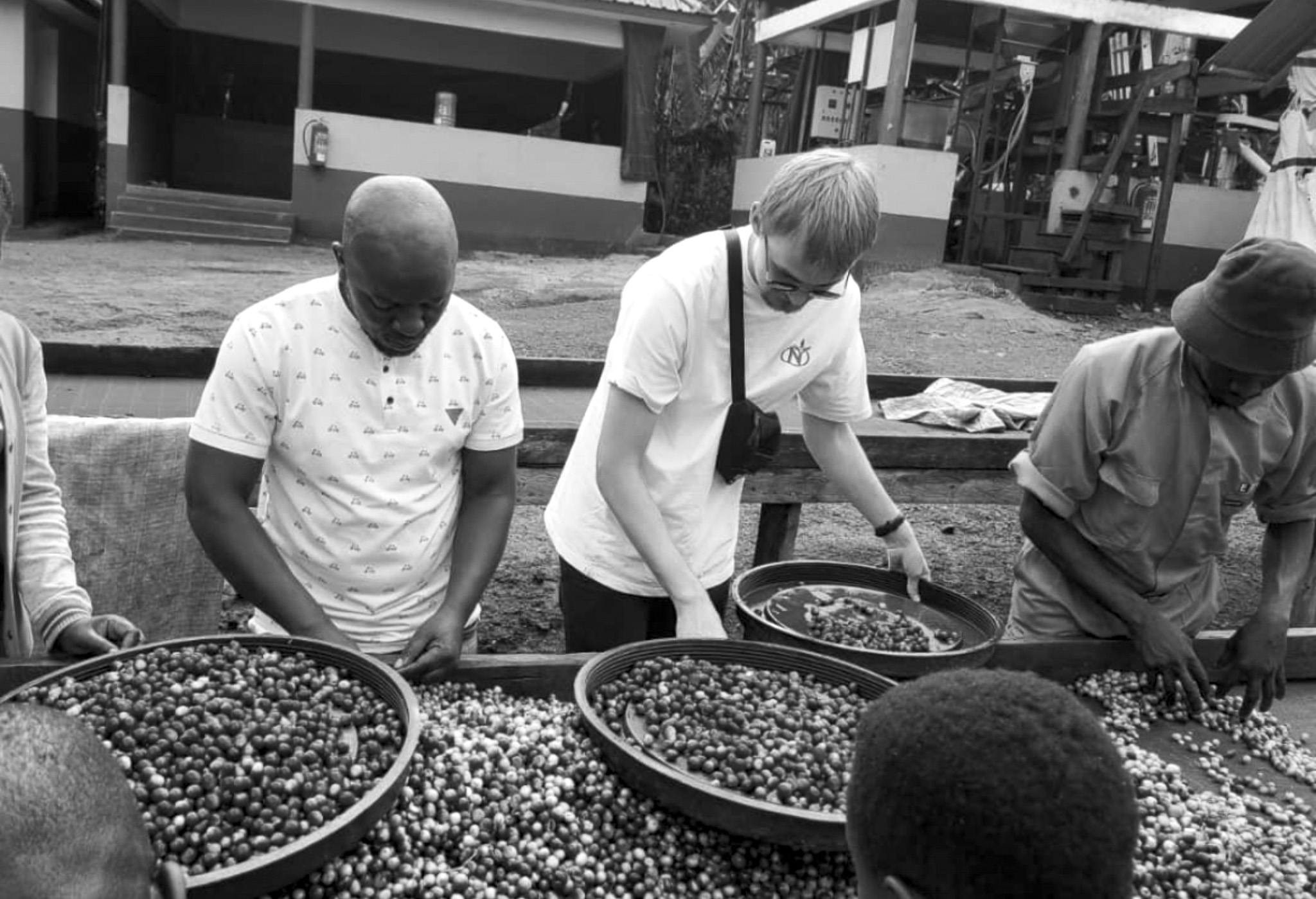Peru's high altitudes and vast uncultivated lands offer great potential for quality coffee. With a less developed specialty coffee industry compared to other regions, we have the opportunity to work closely with producers and suppliers to unlock their full potential and sustainably expand production.
Despite the lack of advanced equipment, infrastructure, and governmental support, local farmers produce exceptional coffee with very basic tools like hand-pulpers, tile tanks for dry fermentation, and plastic sheets for drying their coffee. While they produce high quality, this is not enough to ensure the financial viability of their cultivation.
Some general challenges
One of the most common issues is that many high-quality coffees often end up in large, undifferentiated lots, sold at prices that don't reflect their true value. This can discourage farmers from investing in their crops. However, several cooperatives and young exporters we work with are driving the development of the specialty coffee segment by implementing quality programs that train producers and financially reward their efforts.
Some farmers also produce very small quantities of high-quality coffee—too small to be sold as single-farmer microlots. Instead of losing these to generic blends, we can separate them and use them for traceable community lots. These are curated from coffees produced in the same microregion, harvested around the same time, and with similar flavour profiles. This approach allows us to buy more volume from individual producers while offering a wider selection of coffee from specific regions.
For farmers, this means they can access higher premiums, while their coffee finds a place in the specialty market. However, this is a broad generalisation and is a solution that develops over time. Each harvest has unique challenges influenced by market conditions, which we must address on a case-by-case basis.

Insight into the current harvest
This year's harvest has presented a couple of challenges, particularly due to unusually high internal prices in Peru. Starting from June and July, these prices have steadily risen, putting pressure on the entire supply chain. The Peruvian harvest runs from May to October, depending on the altitude, with higher altitude coffees typically coming to market later in the season. Normally, prices for coffee in Peru range from 600 to 800 soles per quintal, but this year, they have been driven higher due to two key factors.
First, the rise in New York coffee prices in July has directly influenced the internal market in Peru, pushing prices up.
Second, it is common practice for buyers to try to complete their purchases and shipments by August — so coffee can enter the market in time. The rush to secure coffee by mid-harvest increases internal competition and, in turn, drives up prices.
On top of that, shipping delays in East Africa have compelled buyers to seek volume alternatives elsewhere, including Peru, increasing demand in an already pressured market.
When prices are high, the general quality levels can be affected. Producers face the dilemma of either holding onto their coffee in hopes of further price increases or rushing to sell while prices are still high. In both cases, this can affect quality either because the product is not stored properly or because processing is rushed. Plus, producers are often under personal financial pressure, as coffee sales represent their primary income for the year. Their need to get the highest price is often driven by immediate financial demands, like paying off loans or school fees.
For coffee importers like us, this situation means that we must cup through a much larger volume of coffee to find the standout lots that meet our quality standards. Despite the challenges, there will still be excellent coffee this year, but identifying it requires more effort and a keener focus on quality control. Our long-standing relationships with cooperatives and exporters are crucial in ensuring that the quality remains high. Clear communication with our partners allows them to pass on critical information to the producers, maintaining an understanding of the balance between price and quality.
Our Perus exhibit jammy fruit notes, perfumed florals, as well as excellent structure and complexity.

The bigger picture
Sustaining long-term relationships with producers requires ongoing dialogue about market conditions and quality expectations. Consistency is key. Producers need to know, to the last detail, what type of coffee they are expected to deliver and how it will be received in the market. At the same time, buyers like us must remain reliable and stable, providing a consistent market for coffees that require significant investment. This kind of partnership gives the producers the stability and confidence to meet our needs, knowing there is a dependable buyer on the other side.
The entire supply chain depends on collaboration, from producers to exporters to buyers to roasters. When each link in the chain functions together effectively, long-term success follows. Our role is to be clear about our needs and offer consistent support to our partners. This support varies from harvest to harvest, depending on the conditions and the specific needs of the producers, but it always aims to help our partners become more profitable over time.
A roaster's commitment to a specific origin or producer plays a crucial role in the overall development of the product, as this also contributes to the stable market producers need to be able to lean on, before investing in their production.
By maintaining open communication and focusing on long-term relationships, we can help producers navigate difficult harvests, ensure quality remains high, and sustain the specialty coffee segment in Peru.






